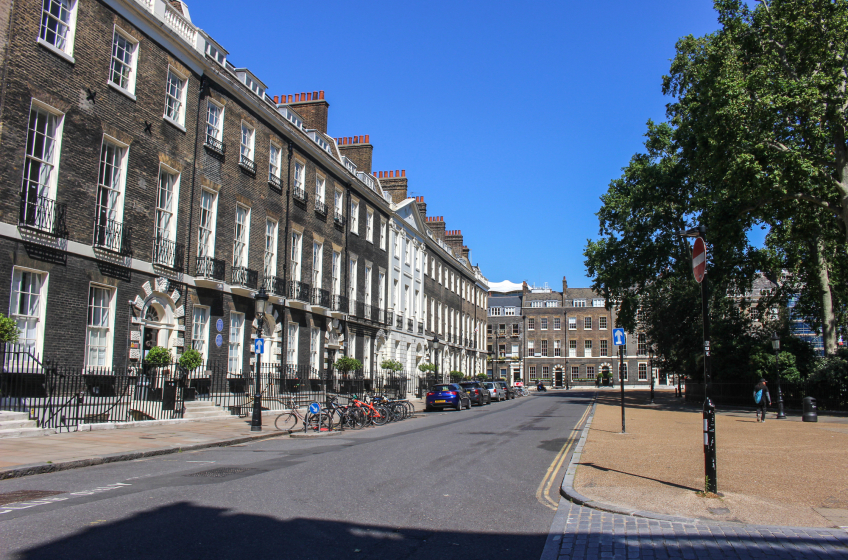Discover Bloomsbury | A Visitor's Introduction to Bloomsbury
Bloomsbury is a neighbourhood steeped in literary and cultural heritage. Known for its historic associations with writers, intellectuals, and scholars, this area offers a unique blend of Georgian architecture, peaceful squares, and world-renowned institutions.
Recommended Bloomsbury Accommodation: Hotels Bed & Breakfasts
Bloomsbury's Literary Legacy
Bloomsbury is perhaps best known for its literary history, particularly as the home of the Bloomsbury Group. This influential collective of writers, artists, and thinkers, including Virginia Woolf, E.M. Forster, and Lytton Strachey, lived and worked here in the early 20th century. Walking through Bloomsbury, you can almost feel the creative energy that once flowed through its streets. Key sites include Gordon Square, where Woolf lived, and the nearby Tavistock Square, both of which offer plaques commemorating the group's members.
The British Museum
At the heart of Bloomsbury lies the British Museum, one of the world’s greatest repositories of human history and culture. Opened in 1759, the museum houses an extensive collection of over eight million works, including the Rosetta Stone, the Elgin Marbles, and the Egyptian mummies. The museum's neoclassical architecture and the iconic Great Court, with its stunning glass roof, are attractions in their own right.
Bloomsbury's Garden Squares
Bloomsbury is renowned for its beautiful garden squares, providing green oases amidst the urban landscape. Russell Square is one of the largest and most famous, featuring meticulously maintained lawns and a central fountain. Nearby Bedford Square, surrounded by some of London’s best-preserved Georgian buildings, offers a quieter, more intimate setting. These squares are perfect for relaxing, picnicking, or simply taking a leisurely stroll.
Academic Excellence
This neighbourhood is synonymous with academic excellence, being home to some of London’s most prestigious educational institutions. University College London (UCL) and the School of Oriental and African Studies (SOAS) are both located here, contributing to the area's vibrant and youthful atmosphere. The Wellcome Collection, with its fascinating exhibits on medicine and human life, is another must-visit for those interested in science and culture.
Bloomsbury's Cultural Landmarks
Bloomsbury boasts a wealth of cultural landmarks beyond the British Museum. The Charles Dickens Museum, located in the author’s former home on Doughty Street, offers a glimpse into the life and works of one of England’s greatest novelists. The Foundling Museum, near Brunswick Square, tells the story of the Foundling Hospital, the UK’s first children’s charity, and showcases works by artists like William Hogarth.
The Brunswick Centre
For a taste of modern Bloomsbury, head to the Brunswick Centre. This iconic 1970s development is a striking example of Brutalist architecture and now houses a mix of shops, cafes, and a cinema. It’s a great place to grab a coffee, enjoy some retail therapy, or catch the latest film.
A Hub for Book Lovers
True to its literary roots, Bloomsbury remains a haven for book lovers. The area is home to numerous bookshops, including the renowned London Review Bookshop. Just around the corner, you’ll find Persephone Books, which reprints neglected works by mid-20th century (mostly female) writers. Both shops are ideal for finding unique reads and soaking up the intellectual ambiance.
Practical Tips
Bloomsbury is well-served by public transport, with several Underground stations including Russell Square, Holborn, and Tottenham Court Road. The area is also within walking distance of major hubs like King’s Cross and Euston stations, making it easy to access from anywhere in London or beyond. When exploring, wear comfortable shoes as Bloomsbury is best experienced on foot, allowing you to fully appreciate its historic streets and hidden corners.
Shortlist
- Your Shortlist is empty

